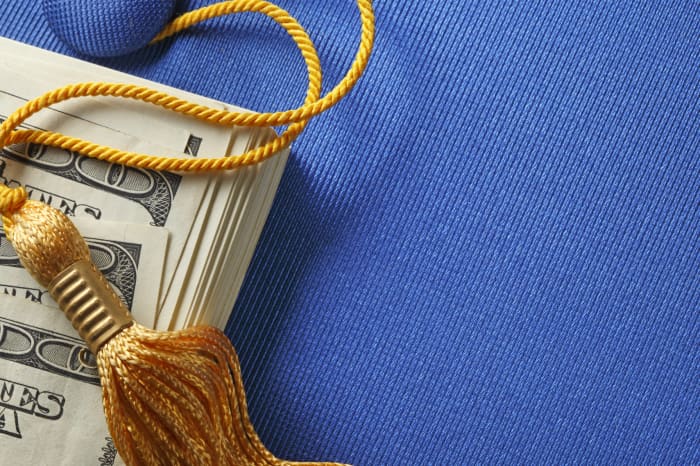I’m a teacher, still live with my parents, and have $103K in student loan debt, which is more than 2x my salary. What are my options?

Question: “I’m a 33-year-old fourth-year teacher earning $41,098 a year before taxes with about $103,000 in student loans. I still live with my parents because I can’t afford a mortgage or get a loan because my credit is poor from the student-loan debt. What are my options?”
Answer: Student loan debt that far outweighs one’s annual salary is a common occurrence, and carrying high debt adds a substantial burden to your monthly budget, even if you’ve shrunk housing costs by bunking with mom and dad. So with student loan repayments set to resume in May, it’s time to take steps to get your own financial house in order. The great news, says Andrew Pentis, loans expert and certified student loan counselor at StudentLoanHero, is that in terms of federal lending, teaching is a field where there are “a lot of repayment assistance and student loan forgiveness programs.” Here are some options.
Have a question about getting out of debt? Email [email protected].
Income-driven repayment plans and other repayment options
First and foremost, scrutinize – and strategize – your monthly loan repayment. If yours is too high, consider applying for an income-driven repayment plan with your federal loan servicer, says Anna Helhoski, student loan expert at NerdWallet. “That will set your payments at a portion of your discretionary income and extend the payment period,” she says. Standard repayment time is ten years; with an income-driven repayment plan you may get a repayment plan of 20-25 years, after which your remaining balance is forgiven.
“Income driven repayment should lower payments, but the borrower won’t pay off their debt quickly and interest is going to continue to accrue,” adds Helhoski. “That might not matter quite as much for a borrower who is a teacher who may have options for forgiveness for federal debt.” (We’ll get to that.)
There are four income driven repayment plans including Revised Pay As You Earn (REPAYE), and they’re designed to maintain affordable monthly payments relative to income. Each comes with eligibility requirements as well as caveats to consider (regarding such issues as taxes and marital status). Depending on the plan, the repayment term will be either 20 or 25 years and the percentage of discretionary income will be 10%, 15% or 20%, says Mark Kantrowitz, author of “How to Appeal for More College Financial Aid.”
“Borrowers on income-driven repayment plans can qualify for payments as low as $0,” says Pentis. “Odds are this individual’s payment would not be zero, but in all likelihood it would drop. That would give some breathing room in the monthly budget.”
For private loans through a bank, credit union or other lender experts advise going to the source. Explain that you’d like a temporary or permanent change, which could be a lower interest rate or longer repayment period. Note, though, that the receptiveness and flexibility of private lenders will vary.
Student loan forgiveness
There are two loan forgiveness programs public school teachers can potentially qualify for – Teacher Loan Forgiveness (TLF), which experts advise as a first step, and Public Service Loan Forgiveness (PSLF).
TLF is a federal program for full-time qualifying educators who work in low-income schools. “After five consecutive years that they teach they can have up to $17,500 in their federal direct loans forgiven,” says Helhoski.
What if there’s remaining debt, as there would be in this borrower’s case. That’s where PSLF comes in. “You can double dip,” says Pentis. PSLF enables people who make 120 loan payments while working in careers as public servants or teachers to get a portion of their student loans forgiven tax-free.
“This borrower might want to take advantage of a limited waiver that’s currently in place that would count any payments that were made while working for an eligible employer,” says Helhoski. “It went into effect a couple months ago, and it’s going to be in place until the end of October.”
Through Oct. 31, 2022 borrowers may receive credit for past payments made that would not have previously qualified for PSLF. If you’ve been denied PSLF before, you may be eligible under the temporary waiver.
A long-view consideration, according to Kantrowitz: Income-driven repayment forgiveness kicks in after 20 or 25 years, depending on your plan.
As you get a grip on student loan repayments, you can also simultaneously rehab your credit standing. Down the road that will make securing a mortgage or other loans more feasible.




